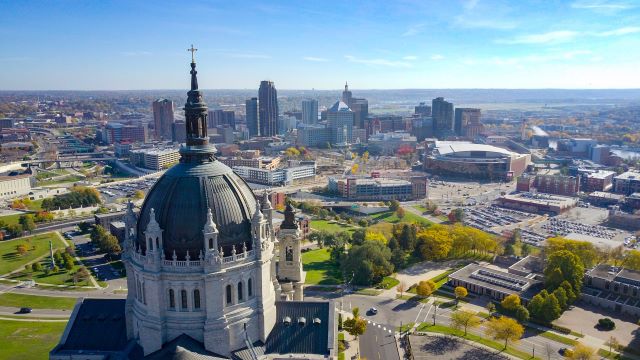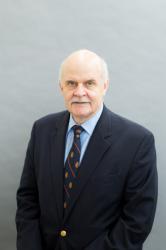In many countries, debates we had 40 years ago are starting to be rehashed: can one be both a Catholic and a classical liberal?
It’s good to remember some of the arguments that liberal Catholics used then to justify their positions. The Spanish priest Enrique Menéndez Ureña, SJ (1939-2014) started to work on this topic in the late 70s and early 80s. His work culminated in the book The Myth of Socialist Christianity, first published in 1981 as El Mito del Cristianismo Socialista. In a very respectful way he asked: if we judge socialism by its goals, how does it compare with more open societies? His answer was a clear and respectful criticism of socialism, no matter how well-intentioned. In an article I wrote in Forbes last year, I mentioned that the English translation only appeared in 1988, published by the Franciscan Herald Press with a title which, unlike the Spanish edition, does not give away the anti-socialist conclusion: Capitalism Or Socialism? An Economic Critique for Christians. Menéndez Ureña predicted the fall of communist economies. He was attacked by members of his own religious order. It distressed him, but he responded with another book, Left-Wing Neoclericalism.
Like James Sadowsky (1923-2012), another Jesuit favorable to economic liberty, he became a member of the Mont Pelerin Society, the prestigious society of free-market economists. Unfortunately he died at 76. Menéndez Ureña was for a time a roommate of Fr. Luis Ugalde (1938-), the influential Venezuelan Jesuit and fellow critic of socialism who had a long tenure as rector of Venezuela’s Andres Bello Catholic University (1990-2010).
Lay intellectuals who gave impeccable examples of Catholic life, such as the deceased Rafael Termes (1918-2005), also produced profound work in defense of economic freedom. Termes’s book The Creative Power of Risk (1986) describes the proper framework of a free economy in which profits reward entrepreneurial work that correctly anticipates the needs of the market.
In the United States, Michael Novak (1933-2017) abandoned his leftist past and wrote The Spirit of Democratic Capitalism (1982). This work became a key book for liberal Catholics. From that point on, Novak continued his studies and his great admiration for the benefits of economic freedom in the context of Catholic traditions.
The first great treatises on Catholicism and economics, in the 15th and 16th centuries, were not published for ideological reasons. They did not seek to determine whether one could be Catholic and liberal. Moral theologians needed to respond to questions such as: Is it sinful to sell something at too high a price? Is it immoral to make an exorbitant profit? Jurist-theologians asked: Does the governor have the right to fix prices? Are salaries and profits topics for contractual justice or distributive justice?
It would be hard to find a topic more important to liberals than that of private property. Theologians of the late Middle Ages analyzed the meaning of the seventh commandment: You shall not steal. They described the just ways of obtaining, disposing of, and transferring property and noted the problems created by property held in common.
On almost every topic (except for that of interest), the great Late Scholastic doctors’ responses were favorable to freedom. The principle of volenti non fit injuria (“no injustice is committed against one acting voluntarily”) was studied and accepted in the majority of cases. But fraud, coercion, monopoly, and to a certain extent ignorance and extreme need on the part of participants could lead to injustice in an apparently free exchange.
In our day, when profit is again under attack, it’s worth recalling the answers that St. Bernardine of Siena, a Franciscan, gave in his day. If a merchant buys a product in one province for 100 monetary units and then sells it in another province where its price is 300, is that profit just? Yes, was Bernardine’s answer – but if the price were to drop to 50, his loss would also be just.
Now that we are more frequently seeing papal pronouncements on topics such as profits, corruption, globalization, and money, the writings of religious figures such as St. Bernardine and St. Antoninus of Florence (a Dominican and bishop) can shed light on our analyses. Who were these figures and what were their contributions to the development of the market economy? St. Bernardine’s Siena and St. Antoninus’s Florence had a very rich cultural, social, political, and economic life. These saints’ reflections on economic topics complemented the writings of St. Thomas Aquinas and other precursors. Their work laid the foundations for the ideas that in the hands of Francisco de Vitoria, a Dominican, gave rise to the Salamanca School. Another prominent Dominican in this regard was Domingo de Báñez, the confessor of St. Teresa of Avila.
After St. Ignatius founded the Society of Jesus in 1539-40, a significant group of its members added their own reflections on economic topics. Among the most famous of these are Luis de Molina, Leonardus Lessius, Juan de Lugo, Antonio de Escobar y Mendoza, Juan de Mariana, and Francisco Suárez. Their reflections on economic topics, and especially on political topics, led Lord Acton to write that “the greater part of the political ideas of Milton, Locke, and Rousseau, may be found in the ponderous Latin of Jesuits who were subjects of the Spanish Crown, of Lessius, Molina, Mariana, and Suárez.”
Books entirely dedicated to economics were few. Juan de Mariana’s treatise on money, published in 1609, is one significant exception. The book is full of lessons even for today’s world. Tomás de Mercado, who wrote a book on trade and contracts, did a great deal of his studies in Mexico, where he received his master’s degree.
When we compare these authors’ writings to many of the Church hierarchy’s statements on economic topics today, we note little progress. These theologians were very careful to distinguish the “ideal” from reality. On the topic of just price, for instance, Domingo de Soto – author of one of his time’s most famous books on justice – declared that it would be easier if the government could determine prices in the same way it determines measures of weight and distance. But since determining all prices is inconvenient and not in accord with nature, De Soto accepted the common teaching that in most instances the just price is the market price. This market price isn’t just any price but the price determined by common market assessment, but without fraud, monopoly, or coercion. These authors attacked the idea that the government can determine just profit levels. A just profit is one that comes from buying and selling at just prices in the market, no matter the amount.
Not all of us who have the grace of being Catholic have the same love, understanding, and respect for economic freedom. But those of us who feel part of both traditions have many sources to nourish our vision of the economy that, like no other, has aided the progress of civil society and the development of the human person.
(Homepage photo credit: Unsplash.)

